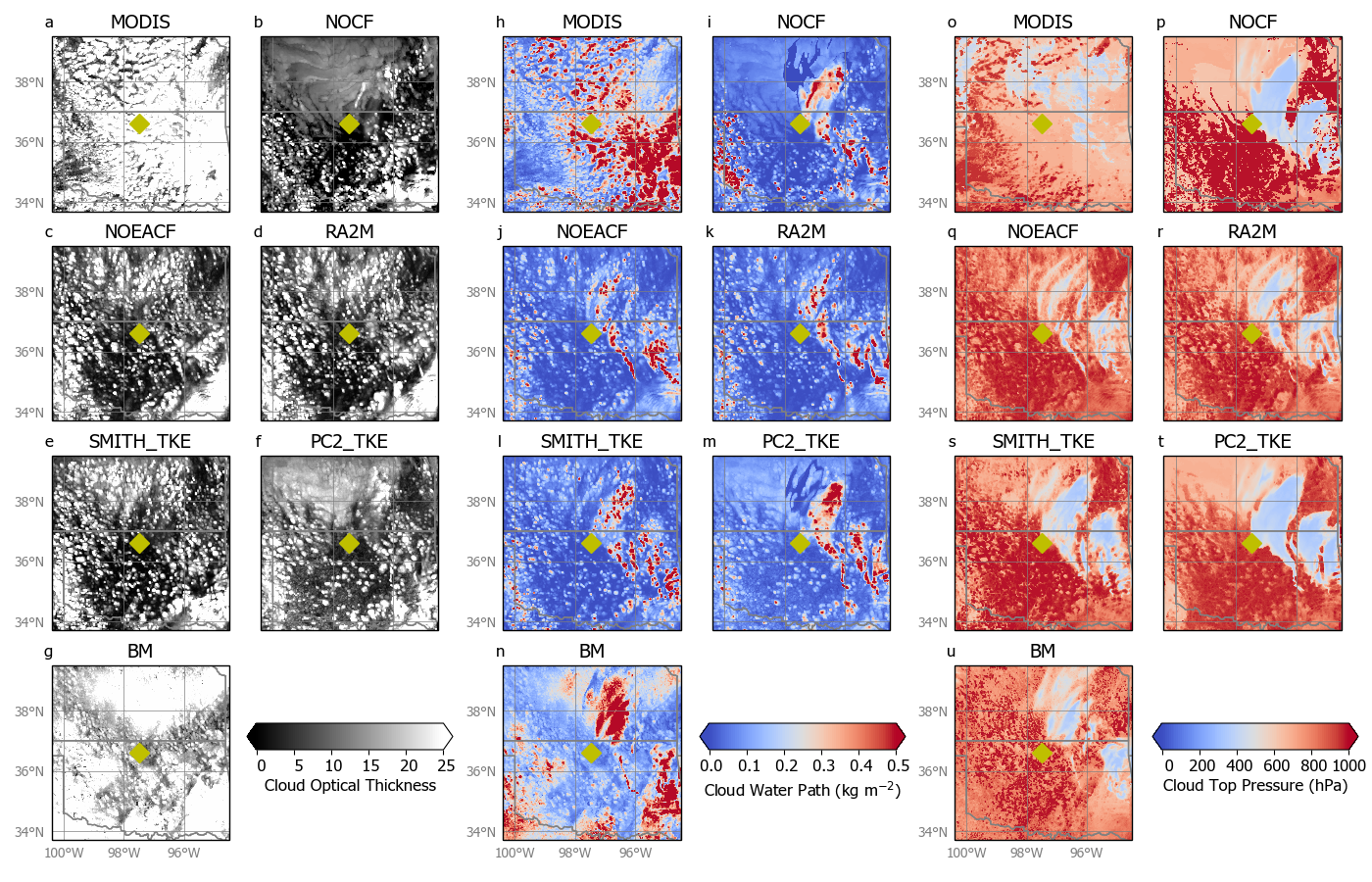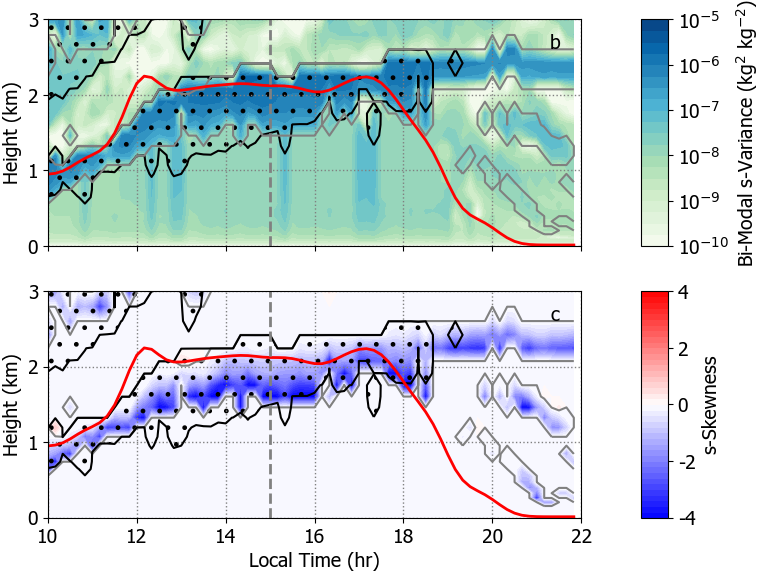A new bimodal diagnostic cloud fraction parameterization
Submitter
Van Weverberg, Kwinten — Met Office
Area of Research
Cloud Processes
Journal Reference
Van Weverberg K, C Morcrette, I Boutle, K Furtado, and P Field. 2021. "A Bimodal Diagnostic Cloud Fraction Parameterization. Part I: Motivating Analysis and Scheme Description." Monthly Weather Review, 149(3), 10.1175/MWR-D-20-0224.1.
Van Weverberg K, C Morcrette, and I Boutle. 2021. "A Bimodal Diagnostic Cloud Fraction Parameterization. Part II: Evaluation and Resolution Sensitivity." Monthly Weather Review, 149(3), 10.1175/MWR-D-20-0230.1.
Science

Figure 2. Cloud optical thickness (left), cloud water path (middle), and cloud top pressure (right) at 1500 LT as observed by Aqua MODIS (a, h, and o) and as simulated not using a cloud fraction parameterization (b, i, and p), using various diagnostic cloud fraction parameterizations (c, d, e, j, k, l, and r, s, q), using the prognostic cloud fraction parameterization PC2 (f, m, and t), and using the new bimodal diagnostic cloud fraction scheme (g, n and u) for the stratocumulus case of 27 April 2011 for the entire 1-km grid-spacing domain. State boundaries are denoted by gray solid lines, and the location of the Southern Great Plains Central Facility is highlighted with the yellow diamond. Simulations have been run through COSP to provide synthetic optical thickness and water paths as would be observed by MODIS. From journal.

Figure 1. Time-height cross section of the bimodal mixture saturation-departure variance (top) and bimodal mixture saturation-departure skewness (bottom) simulated by the bimodal cloud scheme for the stratocumulus case of 27 April 2011. The solid gray contour shows the diagnosed entrainment zone, while the dotted shaded areas denote cloud fractions larger than 1%. The red solid line indicates the top of the mixed layer and the gray dashed vertical line indicates the time of the MODIS overpass shown in Figure 2. From journal.
The parameterization of subgrid cloud fraction remains important in numerical weather prediction (NWP) models, even at convection-permitting resolution. The subgrid variability of moisture and temperature are still significant at these scales, so that a grid box can be partly cloudy even when the grid-mean state is subsaturated. Complex schemes have been developed over the past decade to explicitly predict the higher-order moments of the subgrid variability to infer subgrid cloudiness. While these schemes are mathematically elegant, they are still computationally expensive and require a number of assumptions to obtain closure. Simpler, diagnostic approaches could help improve NWP models at a fraction of the cost.
Impact
Scientists at the UK Met Office developed a new bimodal diagnostic cloud fraction parameterization for use in convection-permitting NWP simulations. The scheme first identifies entrainment zones near sharp inversions. For each level within the entrainment zone, a univariate, bimodal subgrid distribution of saturation departure is then reconstructed from air parcels originating from the top and the bottom of the entrainment zone. Each mode has variances derived from scale-aware turbulent properties, and a weight so that the total saturation-departure in each grid box remains conserved. Indeed, this bimodal behavior is often seen in lidar and aircraft observations, as pockets of dry air from above the inversion are drawn into the entrainment zone without readily mixing. The new parameterization allows for skewed, bimodal subgrid saturation-departure distributions, similar to observations. Using a wealth of observations from the Midlatitude Continental Convective Clouds Experiment (MC3E) at the Southern Great Plains ARM site, it is shown that the new parameterization outperforms existing and more complex approaches, in terms of cloud cover, optical thickness, cloud water content and surface radiation. It is also shown that the new cloud scheme scales with resolution in a way similar to observations.
Summary
A new diagnostic bimodal cloud fraction parameterization has been developed for convection-permitting NWP simulations. The scheme allows for bimodal and skewed subgrid saturation departure distributions, similar to those observed with lidar and aircraft. Cloud cover, water content, and optical properties are better represented and more scale-aware with this new scheme, compared to current operational approaches and even more complex prognostic cloud fraction schemes.
Keep up with the Atmospheric Observer
Updates on ARM news, events, and opportunities delivered to your inbox
ARM User Profile
ARM welcomes users from all institutions and nations. A free ARM user account is needed to access ARM data.


















